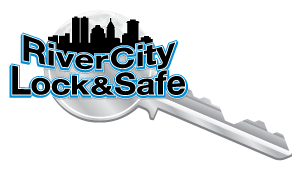I am a locksmith
Written by Marc Goldburg - The National Locksmith
A professional trained locksmith installs locks, deadbolts and other locking devices to safeguard homes, businesses, vehicles and other property. Locksmiths also modify and repair such devices, rekey locks, make duplicate keys, generate new keys for locks whose keys have been lost and respond to emergency calls to open vehicles, homes and businesses that have been locked accidentally or have malfunctioned.When new or replacement locks are required, a locksmith assists the customer in determining the types of locks needed and where they are to be installed. The locksmith installs a lock by cutting or drilling the proper opening in the selected location, using small hand and power tools.
Locksmiths sell and service safes for home and business use. Locksmiths also install and service electronic alarm and surveillance systems and access control systems. Banks have many locking devices that require regular service by locksmiths such as vault doors, safe deposit boxes and teller equipment.
A locksmith repairs a lock by disassembling and examining it to locate worn or malfunctioning parts, then cleans and adjusts the internal mechanisms and replaces these parts with new ones supplied by the lock's manufacturer. On occasion, it may be necessary to custom make some repair parts using lathes, drills, grinders, and other power and hand tools. When the repairs have been completed, the locksmith will reassemble the lock and check its operation.
Locksmiths respond to emergency calls for customers who have accidentally become locked out of home, business or vehicle. The locksmith begins by examining the locks to determine the best method to circumvent the lock. These methods may include use of lock picks, bypass tools or other special instruments. Fitting a key by code or other skilled means is also a method of opening a lock. Experience, skill and knowledge dictate the method a professional selects to open a lock. There are times when the quality of the lock, concern for safety of occupants and other factors such as malfunctions of the lock may force the locksmith to use destructive techniques to gain entry. Before performing an opening or certain other sensitive tasks, the locksmith may require a picture ID.
A locksmith makes duplicate keys using a key-duplicating machine. With the customer's (pattern) key and key blank clamped in their respective vises, the locksmith moves the pattern key across the guide. A rotary cutter cuts the same pattern into the key blank. The locksmith carefully examines the new key to ensure its accuracy.
For security reasons or because keys are stolen or misplaced, many businesses, hotels/motels and apartment complex owners contract with locksmiths to provide new master key systems, reset combinations and rekey their door locks on a regular basis.
Some cities and states require locksmiths to be licensed and bonded. The licensing process may include passing an examination, submitting fingerprints, and paying a fee to the licensing agency. A self-employed locksmith must also keep business records and maintain a proper inventory of locks, parts, keys and tools.
Qualifications: Locksmithing involves precise and detailed work. Good locksmithing professionals possess mechanical and mathematical ability, good vision, spatial perception, eye-hand coordination and manual dexterity. They must be able to understand lock and key specifications, operating manuals and other written or oral instructions as necessary. Additional traits include patience, emotional stability, honesty, dependability, accuracy and the ability to get along with other individuals.
Education and Training: During high school, the prospective locksmith should take courses in mathematics, mechanical drawing, metalworking, basic electronics, physics, and English plus some business education. To install electric locks, alarms, access control systems or surveillance devices, locksmiths must have a knowledge of electricity and electronics.
